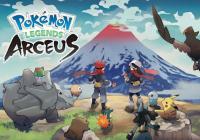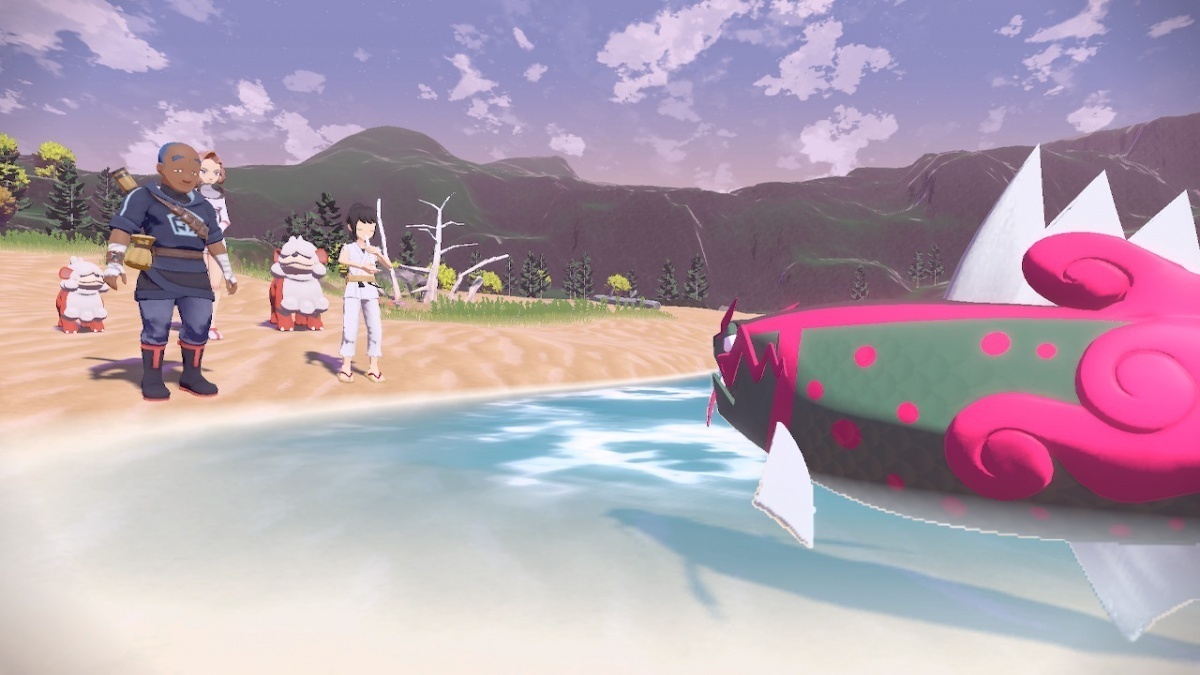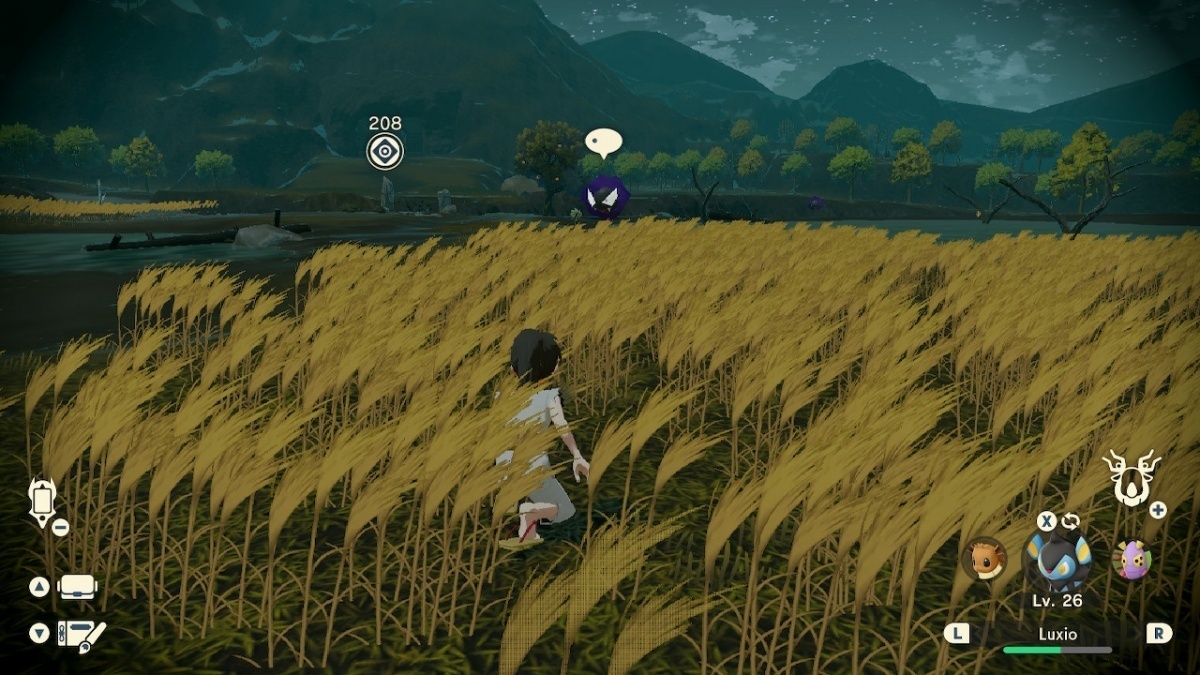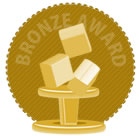Pokémon Legends Arceus (Nintendo Switch) Review
By Rudy Lavaux  26.02.2022
26.02.2022

Announced less than a year before its eventual release, Pokémon Legends Arceus promised a new spin for the franchise: no more different versions of the same game, finally a Pokémon catching experience to match the anime interpretation of the universe a bit more. Revealed at the same time as the remakes of the Generation IV games and released a mere months after these from Game Freak and The Pokémon Company, Pokémon Legends Arceus is set to offer a radically different type of experience, and that's a good thing cause two big releases so close to one another in the same franchise would have been a bit overkill otherwise. So how did it turn out and what of the horrendous level of performance seen in its first unveiling? Read on to find out!
Set in the region of Hisui, the equivalent of Sinnoh in the distant past, Pokémon Legends Arceus opens with the playable character hearing the legendary Pokémon Arceus speak from within a ball of light. Washed up ashore in Jubilife Village, the user-customised protagonist is quickly asked by professor Laventon (an ancestor to Leon and Hop from Sword and Shield) to learn how to throw Pokéballs directly at the titular critters without actually owning any of their own, a critical change in formula already. Tall grass and overall scenery can now be used to hide in wait to catch Pokémon unawares, and skilful aiming is needed for an easier capture. It is possible to use various items to distract or otherwise affect wild Pokémon which themselves can react differently to the changing situation. Some will remain inoffensive no matter what and even flee when they are spotted, others still will attack directly on sight.
In such cases the only option for a catch is to engage them in battle with a trained Pokémon of your own, weakening them down or inflicting a status effect on them to make them less likely to struggle. This is not very different from older games in that sense. This is a matured mix of the Pokémon Go/Let's Go Pikachu & Eevee approach, minus the forced motion controls, with the older style of Pokémon wild encounters. Every Pokémon appears in the wild and there is no fade in or out for the battles: these happen right where they are triggered with no transition whatsoever and the protagonist can even move around during the battle, issuing orders from anywhere they like, creating their own viewing angles at will. This is the Pokémon experience that someone who only watched the anime would design it, in a sense, and something we can only hope may well have a lasting effect on the franchise going forward.
As the story unfurls, the hero or heroine gets enrolled in the Survey Corps of the Galaxy Team and is tasked with assisting the professor in completing the Hisuian Pokédex. This is a world where few people know or even understand Pokémon; initially only people of specific clans who worship so called "noble Pokémon" or members of the Galaxy Team interact with them. Basically, this is the time period when much of the observations about wild Pokémon captured in modern games was initially compiled. Whenever Ash in the anime brings up his Pokédex and it already holds information about the species, it is because of the pioneering work done in Pokémon Legends Arceus. This means that completing the Pokédex is a bit more involved than simply capturing one of each kind: fulfilling a number of tasks for each species is required to increase the amount of information gathered per kind. These can be witnessing the Pokémon use a certain type of move, capturing or defeating enough of them, seeing them evolve, etc. Reporting these tasks to the professor raises the "research level" for that species and once a Pokémon entry in the Pokédex reaches level 10, its entry is considered complete.

242 species can be found in the region and these include some new regional forms or evolutions of existing ones. The completion of the Pokédex is the main objective of the game, but there's an overarching plot which consists of meeting with the Diamond and Pearl clans, who worship "noble Pokémon". The dimensional rift that brought the player tothis time period seems to be causing them to get frenzied and the Galaxy Team boss is keen on curing them from it. The protagonist collaborates with both clans to create balms to throw at the nobles to soothe them and bring them to their senses to prevent any harm to humans or other Pokémon alike. The Hisui region is divided up in five large open areas and each has a few noble Pokémon to be found therein, some of which can even become rideable. For example, the new Stantler evolution Wyrdeer can be mounted to cover great distances faster, the new Ursaring evolution Ursaluna can sniff out objects or missing people, and the new Hisuian Sneasle evolution Sneasler can carry the player up cliffs.
At this point in time, people also scavenge a lot for resources and learn to craft their own Pokéballs, potions, revives and remedies from scratch so Pokémon Legends Arceus places a big emphasis on resource management. The Hisui region is a wild expanse and Pokémon run rampant in it, including new "Alpha" Pokémon who are larger and stronger versions of existing ones that are particularly aggressive the moment they spot the player. The latter does not "black out" when he or she runs out of possessed Pokémon either, and both can and will get targeted by most wild critters resulting in being put to sleep by Pokémon, doused with water, poisoned, etc. There is no visible health gauge but sustaining too much damage from either wild Pokémon or falling will result in losing consciousness and forfeiting several belongings in the process. This plays into a mechanic that involves lost satchels from both the player and others online. Finding lost satchels and sending them back to their online owners yields merit points which can be traded in for valuable items, and other players may return the protagonist's own lost belongings after enough time. Regarding online play there is no kind of GTS or any kind of Pokémon Home implementation at the time of writing. Only local and online trades with people that can be contacted with outside of the game are possible, and online battles are not part of this game either. This is very much a solo experience overall where outside help to complete the Pokédex is possible but not required. Indeed, there is only one version of Pokémon Legends Arceus and no Pokémon requires trading to evolve: the linking cord item (a Game Boy Link Cable!) can evolve those that would otherwise require a trade, and since Pokémon cannot hold items at all, those that would require both holding an item and a trade just evolve from said item being used on them.

So far there is not much to dislike about Pokémon Legends Arceus other than the change in formula potentially turning some people away. It is a surprisingly engaging, gripping and well put together adventure that is well worth experiencing even for seasoned Pokémon veteran if they feel that the shift in focus from strategic battles back to strictly the collection aspect is something that they can live with. It is, however, time to address the elephant in the room, something that became apparent from the moment the game was unveiled and which did not have much hope of improvement given that there was less than a year left until release; it looked rough and performance looked abysmal.
There is some good news at least: the game does hold its target of 30FPS and is the first Pokémon title to attempt some visual techniques that are firsts for the series such as normal maps also
known as bump-mapping, real time shadow casting, a proper progressive day and night cycle as well as screen-space reflections on water surfaces. The settings for all these effects are however extremely low which means details both in geometry and land textures can appear very soupy. The draw distance of pretty much anything that is not barren terrain is short, resulting in constant pop-in. Compared to the wooded and grassy plains of The Legend of Zelda: Breath of the Wild, this is frankly an embarrassment coming from Game Freak. At least foliage is constantly animated instead of vegetation being more static like in Pokémon: Sword and Shield.
Furthermore, Pokémon rendered in the distance only update at a fraction of 30FPS, usually 15FPS, but instances of what seems to be 1 or 2 FPS can be witnessed (sadly, this is not a joke) where a Pokémon will appear to just juggle between only 2 frames of animation. There is level of detail management on said Pokémon too, à la Nintendo 64, where the further away from the camera a Pokémon is, the fewer polygons its 3D model will display. Disappointingly, even Pokémon really not too distant from the player can sometimes still get displayed at their lowest level of detail.
A Ghastly about five metres away from the player can be seen with its eyes made up of just four triangles each (yes, you can even count them by eye!) and its main purplish body looking like one big hexagon, making it less detailed than even its own 3D model from Pokémon Stadium on the N64. Jagged edges are everywhere as well: Pokémon Legends Arceus runs without any form of anti-aliasing. Because of its art style, favouring an almost cel-shaded look creating high contrasts between characters, objects and the general scenery, those untreated polygon edges create a lot of aliasing. Then, there is the matter of Dynamic Resolution Scaling. This is not uncommon at all on Nintendo Switch, and there are usually two components to this: the dynamic resolution part and the scaling part. Crazy, yes, but wait for it!

Pokémon Legends Arceus targets a full 1080p in docked mode and full 720p in portable mode to match the resolution of the handheld screen but will often dip below those resolutions, in both modes, to cope with some load to their engine. At least we imagine it is a matter of load, even though given what is on display it is tough to imagine what could be making the Switch struggle so much when a game like Breath of the Wild is about just as lively as this one and five years old by now, looks so much more appealing. The engine will drop its horizontal resolution by steps of 10% and by steps of 15% on the vertical axis, giving resolutions in docked mode such as 1728x918p or 1536x756p.
This kind of scaling is common on games that try to give as much visual fidelity to the player as possible without sacrificing a target frame rate but then, usually, on those frames that get scaled up to match the displayed resolution, which are 720p or 1080p on Switch, a kind of scaling filter will get applied to smooth the image out and avoid visibly uneven pixel scaling. This is the part where Pokémon Legends Arceus fails to impress the most: there is no filter applied here, which means some lines or rows of pixels will appear thicker than others, making polygon edges appear even blockier than they already did with the lack of anti-aliasing. This is compounded by this game's implementation of transparency: a mesh effect. When the resolution is anything but the target, the mesh pattern used to give an illusion of transparency on some objects gets broken with visibly thicker pixel lines throughout.
Why the Pokémon franchise still disappoints on the technical side of things time and time again is a mystery and the possible reasons are scary to behold: laziness or, perhaps even worse,a lack of competence when it comes to graphical engineering. Nobody at Cubed3 knows why but this is certainly a strong point of frustration when other games on Switch manage to push the technical envelope without sacrificing gameplay. This game sold 6.5 million copies worldwide in its opening week alone so it is definitely a roaring commercial success and yet this franchise still is not getting the visual AAA treatment that Zelda or Mario are getting.
At time of writing, no images or hints have yet been seen of what is next for the Pokémon franchise, and if anyone at Nintendo or Game Freak are listening -we certainly know the outcry from fans worldwide can't have escaped them -the fans want a better showing at last to match the success of the franchise. If need be, hire a second party like Monolith Soft or a third party like Capcom, learn the ropes with a third-party engine, hire new technical engineers, do whatever it takes but please, no more of this constant disappointment as this is a disservice to what are otherwise still thoroughly engaging experiences and Pokémon Legends Arceus is probably one of the best yet! As an experience, it is very safe to recommend to anyone willing to look past the issues with its presentation as it is a lot of fun, but there's just no excuse for it. The Switch is capable of a lot better.

Cubed3 Rating
Very Good - Bronze Award

Pokémon Legends Arceus is a successful attempt at making something new and fresh with the same concepts and ideas that have driven the franchise for thepast nigh on three decades. It is addictive, has charming characters and scenes, and has plenty of content to savour for fans of collectathons. It is a cohesive package on every front. This game is, however, embarrassingly clumsily put together from a graphical standpoint. This does not make it less enjoyable on a pure gameplay level, but during quiet times when little action is happening and players will want to take in what is presented on screen at face value, it is especially jarring. We loved the gameplay loop of Pokémon Legends Arceus, it has been one of the most engaging experiences to come out of Nintendo or Game Freak of the past few years, but it is well past time for either of those actors to finally take the right steps to solve this recurring lack of technical finesse from the series.
Review copy provided by Nintendo of Europe

![]() 7/10
7/10
![]() 0
(0 Votes)
0
(0 Votes)
 Out now
Out now  Out now
Out now  Out now
Out now  Out now
Out now Comments
Comments are currently disabled

 Sign In
Sign In Game Details
Game Details Subscribe to this topic
Subscribe to this topic Features
Features





 Top
Top

